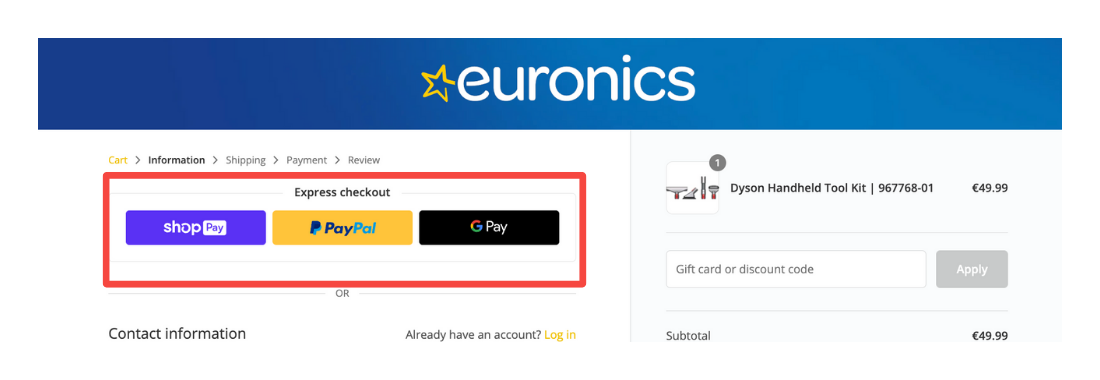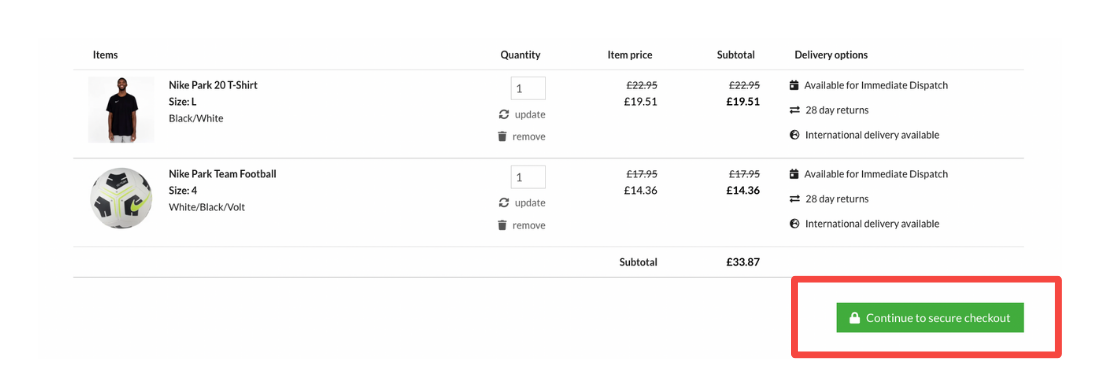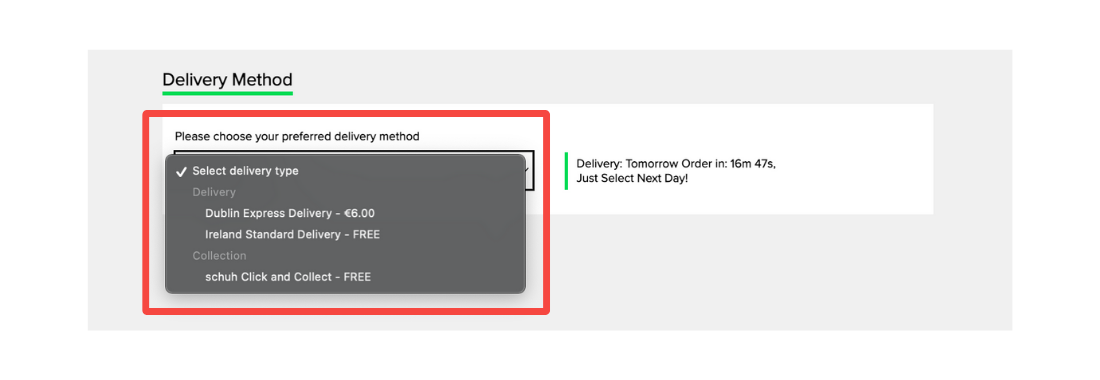It's no secret that online cart abandonment rates are high.
According to Statista, the average retail cart abandonment rate in 2021 was about 71%. That means that for every 100 people who add items to their cart, only 29 actually check out.
That's a lot of potential sales left on the table.
So what can retailers and eCommerce marketers do to reduce cart abandonment rates?
In this blog post, we’ll share some expert tips to help you tackle this issue head-on. Let's first determine how you can calculate your shopping cart abandonment rate.
How to Calculate Shopping Cart Abandonment Rate
Calculating your cart abandonment rate is essential for understanding how well your online store is performing. Fortunately, it's a relatively simple process.
First, you need to track how many people start the checkout process on your website. This can be done through website analytics tools like Google Analytics. Second, you need to track how many people complete the checkout process. This can be done by tracking completed orders in your eCommerce platform. Finally, you need to divide the number of abandoned carts by the total number of started carts.
For example, if you had 500 abandoned carts and 500 total checkouts, your cart abandonment rate would be 50%. And if you want to make these numbers even more tangible, let's say that your average order value is €100. In this case, you're losing €50,000 per month because of cart abandonment.
While a cart abandonment rate of 50% or higher may seem alarming, it's actually quite common. In fact, the average cart abandonment rate across all industries is 70%.
So, what can you do to reduce your cart abandonment rate?
6 Ways to Reduce Cart Abandonment Rates
#1 Create a Simple & Easy Checkout Process
Any business owner knows that one of the most important aspects of running a successful online store is having a streamlined checkout process. A simple, easy-to-use checkout can reduce cart abandonment rates and increase conversion rates.
Here are a few tips for creating a successful checkout process:
Allow guest checkout — according to Salescycle, 34% of shoppers abandon the checkout process when forced to create an account.
Keep it simple — the fewer steps there are in the process, the better. Too many fields or required information can be off-putting to customers and lead them to abandon their purchase. In fact, some case studies show that offering a one-click checkout process can boost conversions by more than 20%. Here’s an example of Euronics using express checkout to optimise their cart conversion rate.

Optimise for mobile — with more and more people shopping on their mobile devices, it’s essential to have a mobile-friendly checkout process.
Use trust signals — displaying security logos or seals can help reassure customers that their personal and financial information is safe. Check out this example of Kitlocker using a security seal to make the checkout process seamless.

Provide customer support information — if customers have questions or run into problems during checkout, they should be able to easily contact customer service for assistance. Offer multiple options e.g. free phone numbers or live web chat.
Be upfront about shipping costs — 25% of shoppers abandon carts due to unexpected shipping costs (and, due to Brexit, shipping to or from the UK has gotten even more complicated and costly, with potential duty and excise charges coming into play).
By following these tips, you'll create a successful checkout process that will keep customers coming back for more.
#2 Offer Multiple Shipping Options
If you're not offering multiple shipping options to your customers, you're likely losing out on sales. Opting for a single shipping method leaves your customers at the mercy of that method's delivery timelines, which may not always align with their expectations in a similar way to offering payment options that shoppers are familiar and comfortable with.
And if those expectations aren't met, they may very well abandon their carts altogether.
Consider giving your customers a few different shipping options to choose from, such as standard, expedited, and express. Offer in-store collection if you have a physical location or a centralised collection location like a drop box as a greener option. This way, they can select the option that best meets their needs in terms of both price and delivery time.
One way to further reduce cart abandonment rates is to offer free shipping for orders that meet a certain threshold. This incentive can be especially appealing to customers who are close to meeting the threshold but may not be willing to pay for shipping. Actually, as many as 78% of customers are willing to spend more to qualify for free shipping.
Offering multiple shipping options gives customers the flexibility to choose the option that works best for them, which can ultimately lead to fewer abandoned carts. See this example of Schuh giving their shoppers multiple delivery options for a hassle-free checkout experience.

#3 Fix Website Loading Speed
If your website loads slowly, people are likely to give up and go elsewhere. This is especially true if they're trying to buy something online. In fact, studies have shown that a one-second delay in page loading can reduce conversion rates by up to 7%.
Here are a couple of easy fixes for optimising your website's speed:
Use a content delivery network — a CDN is a network of servers that delivers content to visitors based on their geographic location. This can help reduce loading times, especially for visitors who are located further away from your server.
Optimise images — large image files can often be the culprit behind slow loading times. Resize and compress images before uploading them to your website.
Minify your code — minifying is the process of removing unnecessary characters from your code, such as whitespace and comments. This can help reduce file size and improve loading times.
Consider the size of the code for site add-ons — some require a lot of code to function on your website and this adds to the load time. When considering add-ons, consider the code size and impact on site load time.
By taking these steps to improve your website's speed, you can help ensure that potential customers stick around long enough to make a purchase.
#4 Use Urgency and Scarcity
Urgency and scarcity are two powerful psychological triggers that can encourage people to take action.
You can create urgency by offering limited-time discounts or by highlighting how many items are left in stock. Scarcity works in much the same way - if people feel like an item is in short supply, they'll be more likely to buy it before it runs out.
In fact, according to a VWO eCommerce report, customers are 9% more likely to buy a product if it’s running out of stock and 10% more likely to buy if it’s trending.
Therefore, if you sparingly and effectively use urgency and scarcity tactics, you can encourage more people to finalize their purchases and reduce abandonment rates.
#5 Set Up Cart Abandonment Email Automations
By sending a series of emails after someone has abandoned their cart, you can give them a reminder of what they're missing out on and encourage them to come back and complete their purchase. Multi-step cart abandonment email triggers can increase sales by up to 13%.
Crafting effective cart abandonment emails requires a bit of finesse, but it's well worth the effort. These emails can make a big difference to your bottom line, so it's worth taking the time to get them right. If you're not sure where to start, take a look at some of the best practices below.
Make sure your subject line is attention-grabbing — remember, your goal is to get the person to open the email, so make sure your subject line is something that will catch their eye.
Use attractive visuals — people are visual creatures, so make sure your email is pleasing to look at. Use images of your products and include attractive discounts or coupons to further entice people to click through.
Keep the message short and sweet — nobody wants to read a long email, so keep your message concise and to the point.
Use coupons and discounts — as many as 57% of US online shoppers who used a coupon code said that if they had not received the discount, they would not have bought the items
When done right, these emails can be highly effective in encouraging customers to come back and complete their purchase. But there's a fine line to walk here - you don't want to come across as pushy or desperate. Instead, focus on being helpful and providing value. Let your customers know that you're there to help them, and make it easy for them to get in touch if they need any assistance.

If you can strike the right balance and engage with your customers, you'll see your cart abandonment rates start to drop - and that means more money in your pocket.
#6 Shopping Experience Matters
It is just the nature of running an online business that customers will abandon their carts regardless of how good your eCommerce strategy is. Even if you do everything right, there will always be a certain percentage of people who simply change their minds or get distracted before completing their purchase.
Why is the in-store cart abandonment rate lower than an online cart abandonment rate? When a shopper walks into a retail store, they can view an entire catalogue and are more confident about every item they add to their basket, but this is way harder to do online with multiple product list pages.
That doesn't mean you should just accept cart abandonment as a fact of life. And this is where AI comes in. You can win your shopper’s confidence online by giving them ideas, helping them explore more products in your catalogue, learning, and adapting the store to their needs in real-time. Here’s an example of Kitlocker using AI to improve product penetration to boost conversion by 300%.
Great Customer Experience = Lower Cart Abandonment
Although it’s impossible to prevent every instance of cart abandonment, there are a few things you can do as a retailer or eCommerce marketer to reduce your rates.
By understanding the psychology behind why people abandon their carts and implementing some of the solutions we’ve outlined in this post, you should see a decrease in the number of lost sales due to abandoned carts.
And at the end of the day, that’s what it’s all about — providing a great customer experience and ensuring that your customers convert at a higher rate.
These six tips will help you get started, but remember that every business is different and you may need to experiment with different techniques to find what works best for you.

